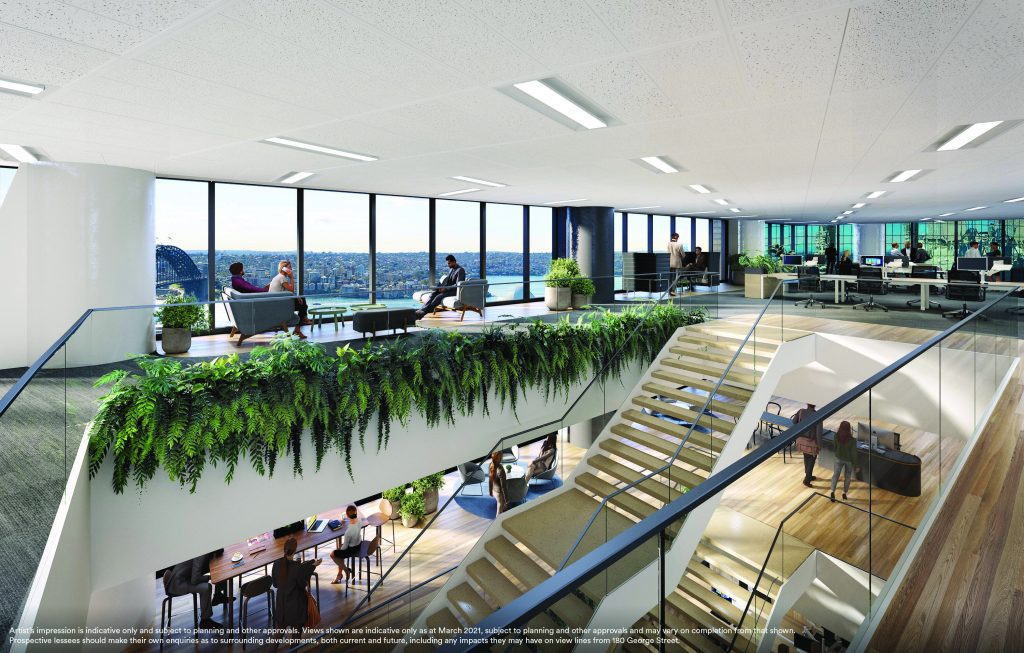Over the past couple of years, Schneider Electric, globally integrated real estate group Lendlease, and global sustainable development firm Arup have been collaborating to design solutions to address some of today’s commercial office space challenges, from the need for more flexibility to economic and environmental pressures.
The foundation for overcoming these challenges is a newly designed, adaptable approach to building design. This approach aims to improve space productivity and efficiency during the fit-out process, leading to higher asset valuations. Our companies identified and tested a practical industry solution through a real-life study at the 180 George Street building in Sydney, Australia.

Photo provided by and used with permission of Lendlease Group
I had the pleasure of discussing the existing study results with Andy Hodgson, Global Advisory Leader at Arup, and Advisory Leader at Arup, and Jeremy Hutchinson, Head of Supply Chain at Lendlease, and I want to share some highlights.
Estelle: We know that transitioning towards a net-zero future is complex for any business. Commercial real estate has been heavily impacted by recent trends — including the lingering effects of the COVID pandemic and increasing energy efficiency and carbon emissions regulations. Given these conditions, what motivated your teams to be part of this project?
Jeremy: We know that the industry will need support to meet global sustainability goals. Nearly 40% of global carbon emissions come from buildings.
From a property management perspective, handling fit-outs and moves could be faster and more efficient because systems are often ripped out and replaced with each move. This especially impacts embodied carbon waste. As the need for carbon reporting and responsibility grows, it is no longer acceptable to ‘just chuck it in the bin.’ While there is yet to be a comprehensive understanding of how carbon accounting will work in every region, we know it is coming and that we, as an industry, must prepare for it. The market needs practical solutions with clear outcomes – and we believe our unique partnership, with our broad range of expertise across firms, can help.
Andy: The commercial office real estate market faces a major challenge in cutting carbon while tackling fluctuating office occupancy with post-COVID work patterns.
We see that both tenants and investors are being more selective. All buildings must adapt to fit into the greener future, and people are looking for greener buildings to protect them from market volatility.
However, the UN estimates that half of the buildings that will exist in 2050 have already been built, so this isn’t just a ‘going forward’ problem; we need solutions that can work with greenfield or retrofit projects. Working with partners gives us better insight into the world our customers inhabit beyond the construction phase. With a new approach to building construction, a flexible design can bring financial benefits alongside unlocking shorter and more flexible leasing arrangements.
Estelle: Our identified opportunity speeds up the fit-out process and reduces embodied carbon with an adaptable approach to managing building services, such as lighting, blind control, occupancy sensing, and ventilation. What else is innovative about this approach?
Andy: It starts with changing the way projects are structured. Instead of focusing on capital expenditures (CapEx) and upfront costs, it focuses on lifecycle costs and impacts. So, rather than be concerned with the construction bottom line, we are looking at the potential impacts of operational decisions like retaining and reconfiguring building services systems for lighting, blind control, and ventilation rather than replacing each tenant. While that choice will slightly increase the CapEx costs, the long-term pay-out is that as tenants change and new layouts are needed, they can be accommodated without a total system replacement. Additionally, this solution will show energy efficiency savings of approximately 23% for brownfield renovations. As a new build project, however, this was not considered in the 180 George Street project.
Jeremy: I agree. From a technical perspective, we aim to ensure top-quality building services are easily adaptable for space usage with tenant growth or change. This has been achieved with practical changes, like breaking up the floor space into smaller zones to create more localized control. It also involved increased mechanical heat load allowance so tenants could increase occupancy density.
We’ve also used multi-function internet of things (IoT)-sensors and devices that combine sensing for lighting, occupancy, and ventilation instead of single-use devices. A standardized lighting approach also ensures that each space has appropriate illumination levels for office use. These are relatively small changes that help to increase flexibility.
Estelle: We’ve modeled and simulated this new design on one floor at the 180 George Street building in Sydney. What have we learned so far?
Jeremy: The study produced a few key findings. One of the big things we recognized was that the actual cost of the adaptable scheme is quite low compared to the asset’s overall value. For example, the building is worth approximately $2 billion, while the cost per floor for the adaptable approach is about $120K. This represents a minor increase in the CapEx investment. However, it benefits all stakeholders, including asset owners, landlords, and tenants, through carbon emissions and waste reduction; time and money savings through reduced physical works during fit-out and tenancy makegoods.
Andy: It’s important to highlight how this adaptable scheme doesn’t just reduce waste; it can enable new shorter-term leasing options. Landlords can switch out tenants faster, offer shorter-term, higher-rate leases, and provide tenants with an optimum, green experience. Our model showed how transitioning just 25% of the floors in the 53-story Sydney building to 2-year leases instead of 10-year leases can generate over AU$1 billion in additional revenues over 30 years.
Jeremy: That is a key point. It provides a solution to today’s problems around timing and waste and new flexibility in how the building can be used. It is one way of future-proofing building investments.
We encourage you to download our new white paper to learn more about our 180 George Street building study and the adaptable building services solution we’ve discussed.




Add a comment